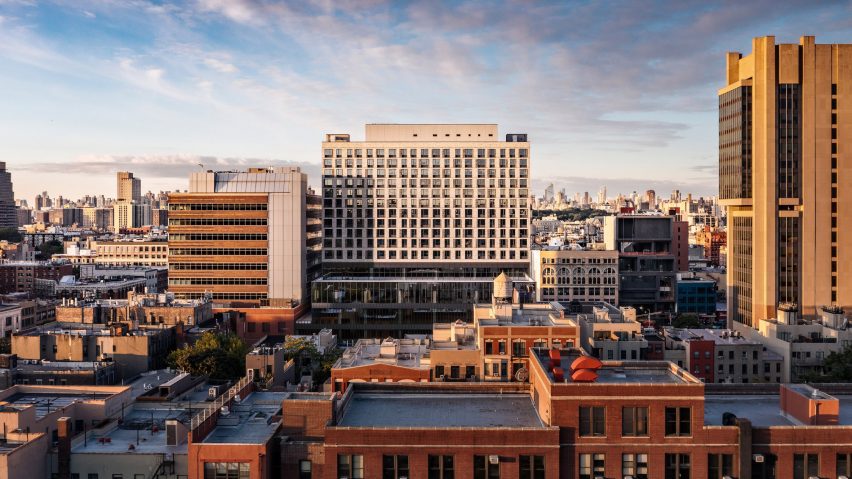
Beyer Blinder Belle creates National Urban League HQ in Harlem
Local architecture studio Beyer Blinder Belle has created a Harlem headquarters for the National Urban League, which houses the "first Civil Rights Museum" in New York.
Civil rights advocacy organisation The National Urban League is relocating from their Lower Manhattan office at 80 Pine Street to historic West 125th Street in Harlem.
The headquarters replaces a redeveloped state-owned parking garage adjacent to the Adam Clayton Powell, Jr State Office Building and stands 17 storeys tall.
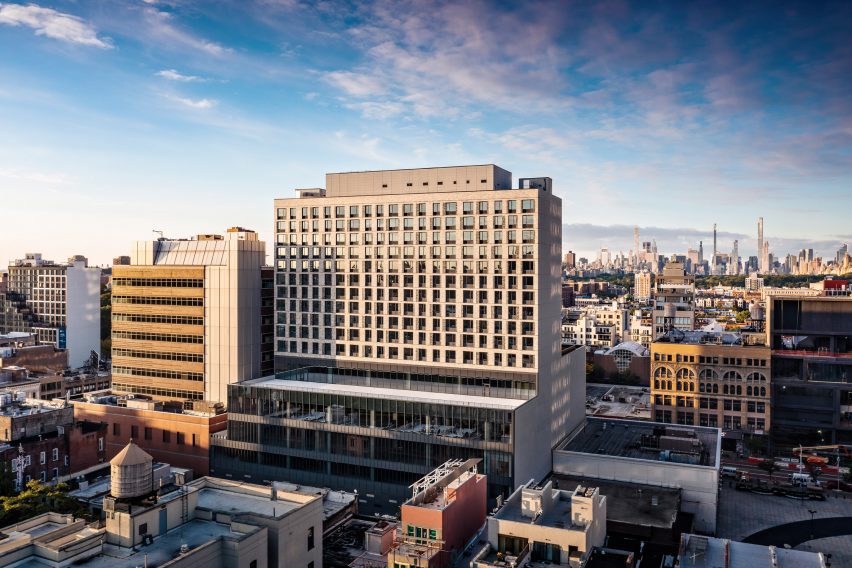
The building features the first Civil Rights Museum in New York, a conference centre, and office spaces for mission-aligned non-profits including Studio Museum Harlem, the United Negro College Fund, and Virginia Union University.
The remaining floors will contain 171 100 per cent affordable housing units, including 51 units for youth ageing out of foster care, and retail space for a Trader Joe's grocery, Pandora, Sephora, and Target.
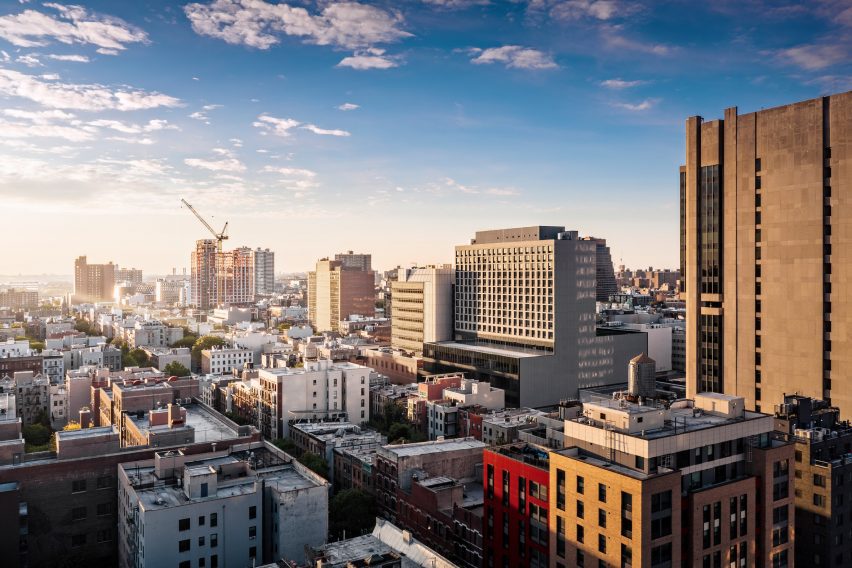
With a building of such varied occupancy, Beyer Blinder Belle (BBB) used differentiated facade treatments to organise and signify the varied uses and programs.
"The Urban Empowerment Center was designed with a rational architectural expression that belies the complexity of its highly diverse mixed-use program and its collaboration between multiple private, public, and state organizations," said the studio.
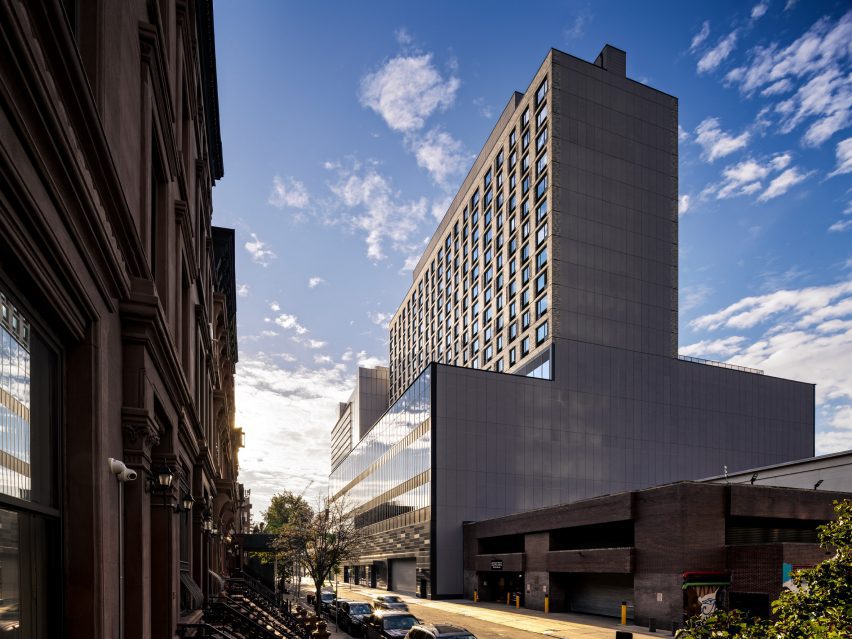
The commercial streetscape on 125th Street has a glass facade with different levels of transparency according to the interior program. The most transparent levels are for retail and the least for private offices and portions of the museum.
Slender vertical fins have been applied at different thicknesses to provide variation along the glass facade while also functionally working as shading.
The glass portion meets the street, while a narrower tower on top is clad in masonry units. A rooftop outdoor lounge was placed for office tenants.
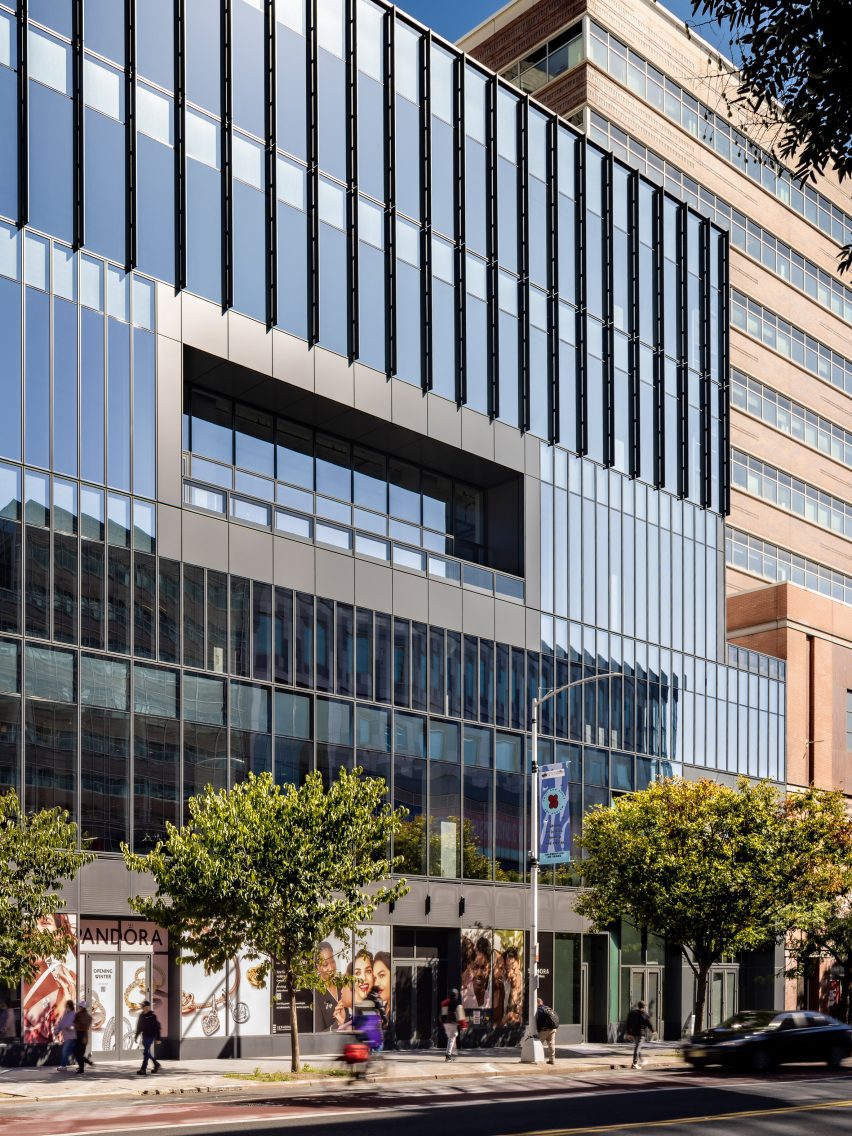
On the opposite face, along 126th Street, is the residential portion of the building, with a similar differentiation between the street-level glass and metal and the stone facade of the tower.
However, the height of the glass portion differs from the commercial side. According to the studio, the height drops to mimic the language of other residences on the block.
"Our residential facade steps in and out about a half-inch, and creates what looks like a larger window frame. It makes the facade look like the windows move when, in fact, the windows stack," said BBB partner Cassie Walker.
Along 126th Street, masonry patterns are also manipulated in scale and material.
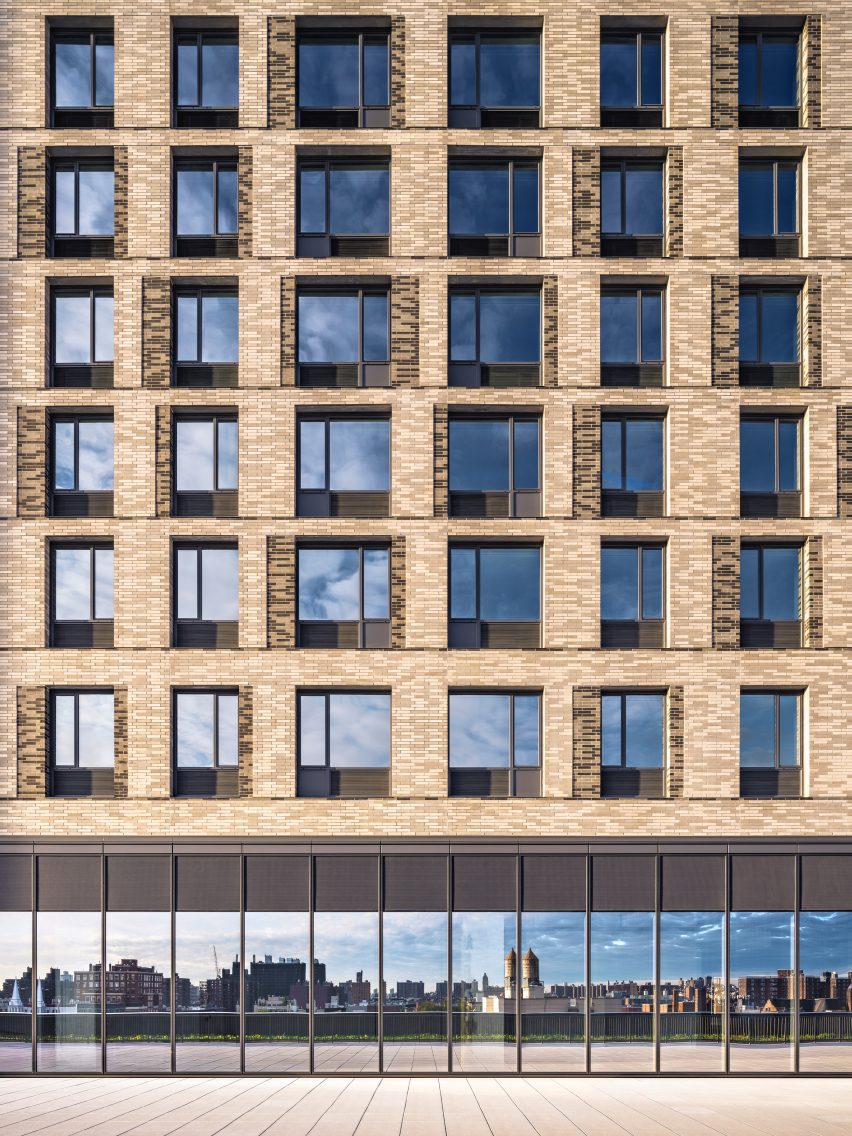
The lower portion of the facade, clad with metal panelling, mimics brick masonry in a stylistic pattern with large rectangular blocks of varying grey finishes.
The upper portion of the facade uses grey bricks to make use of a similar pattern at a smaller scale, furthering the strong visual effect.
The National Urban League and Civil Rights Museum will move into the building in 2025. Currently, there is no set date for the opening of retail and residential spaces.
Other recent projects built nearby include The Smile mixed-used development by BIG and the Bronx Children's Museum by O'Neill McVoy.
The photography is by Alexander Severin